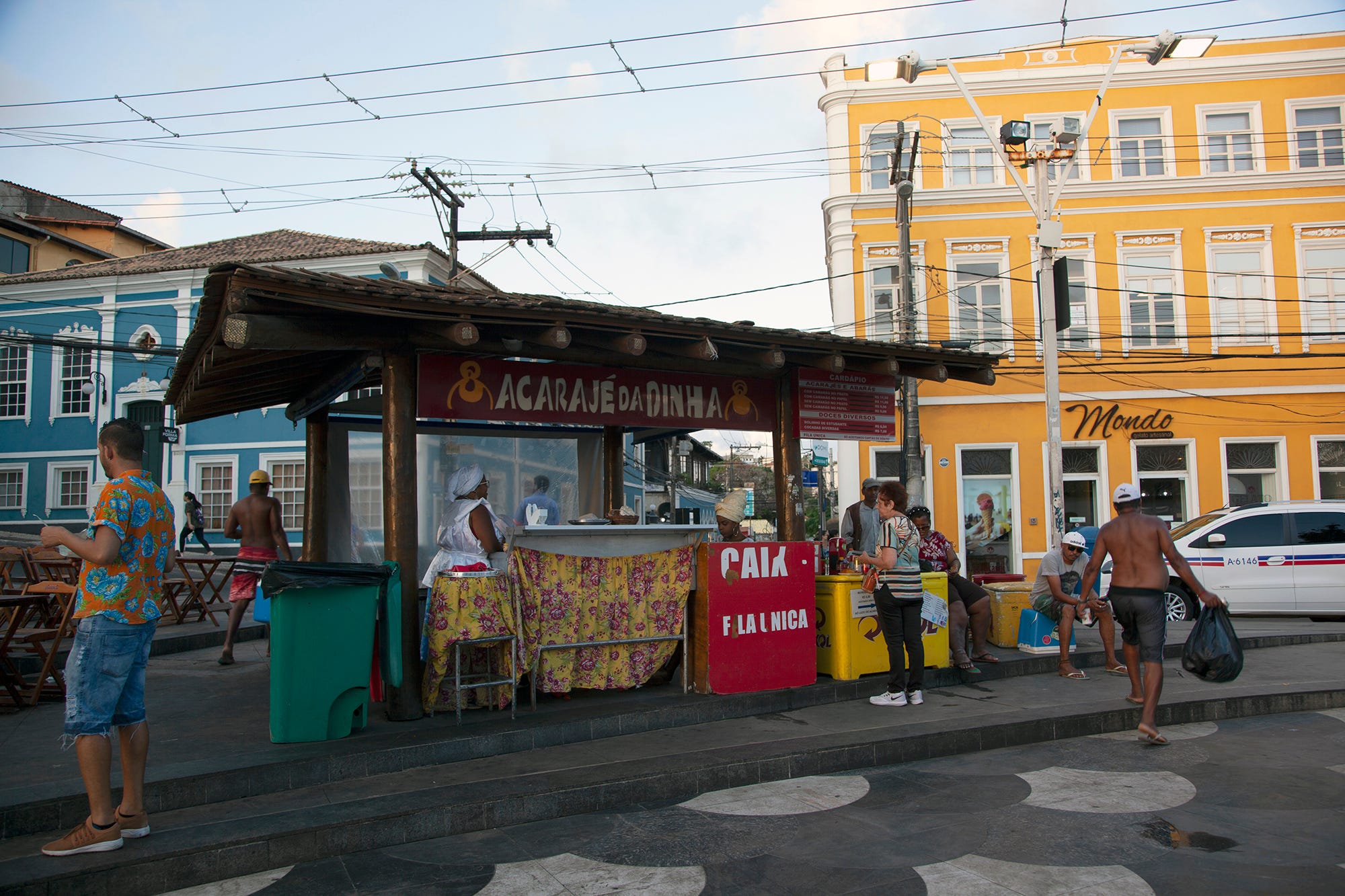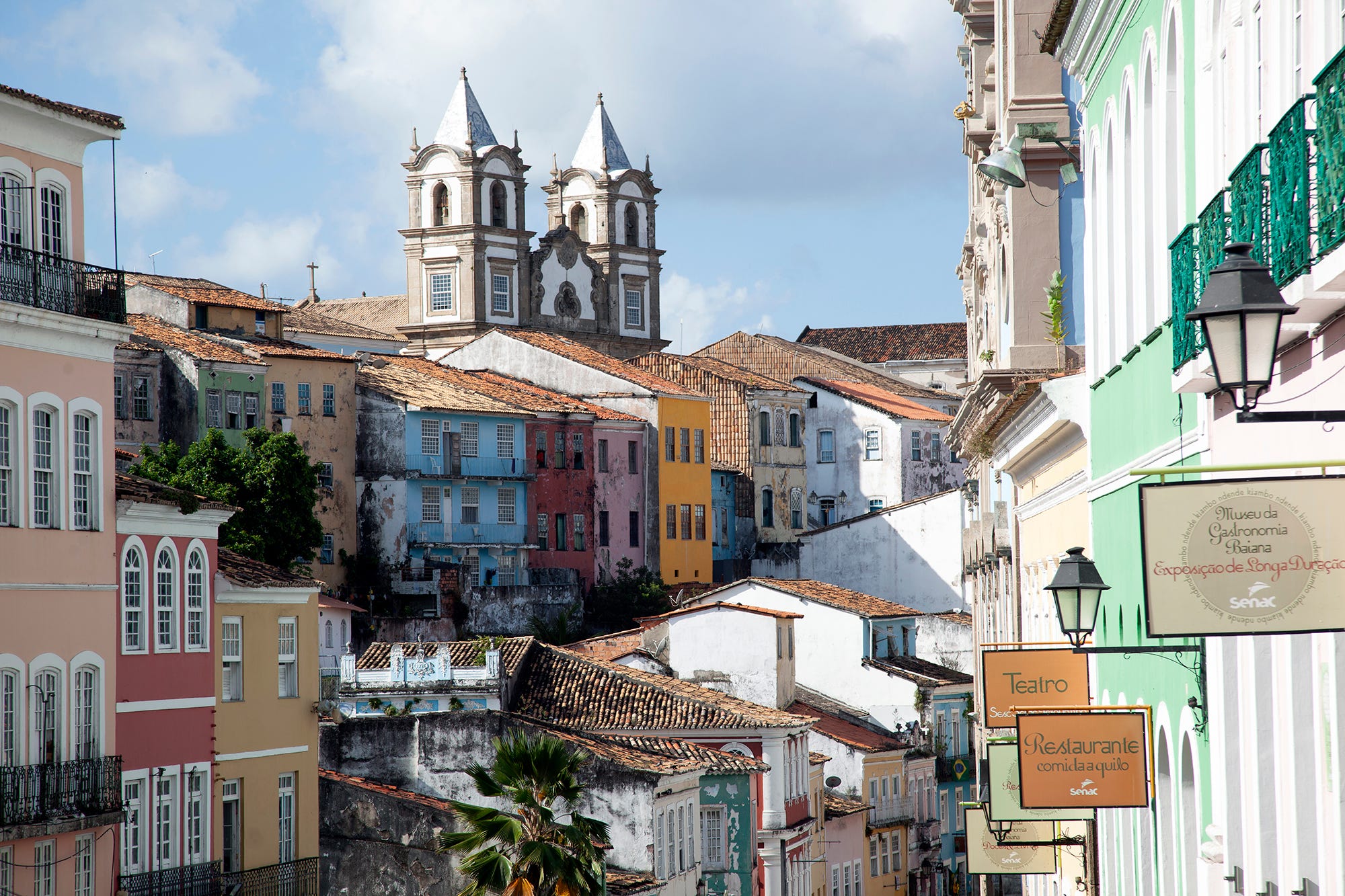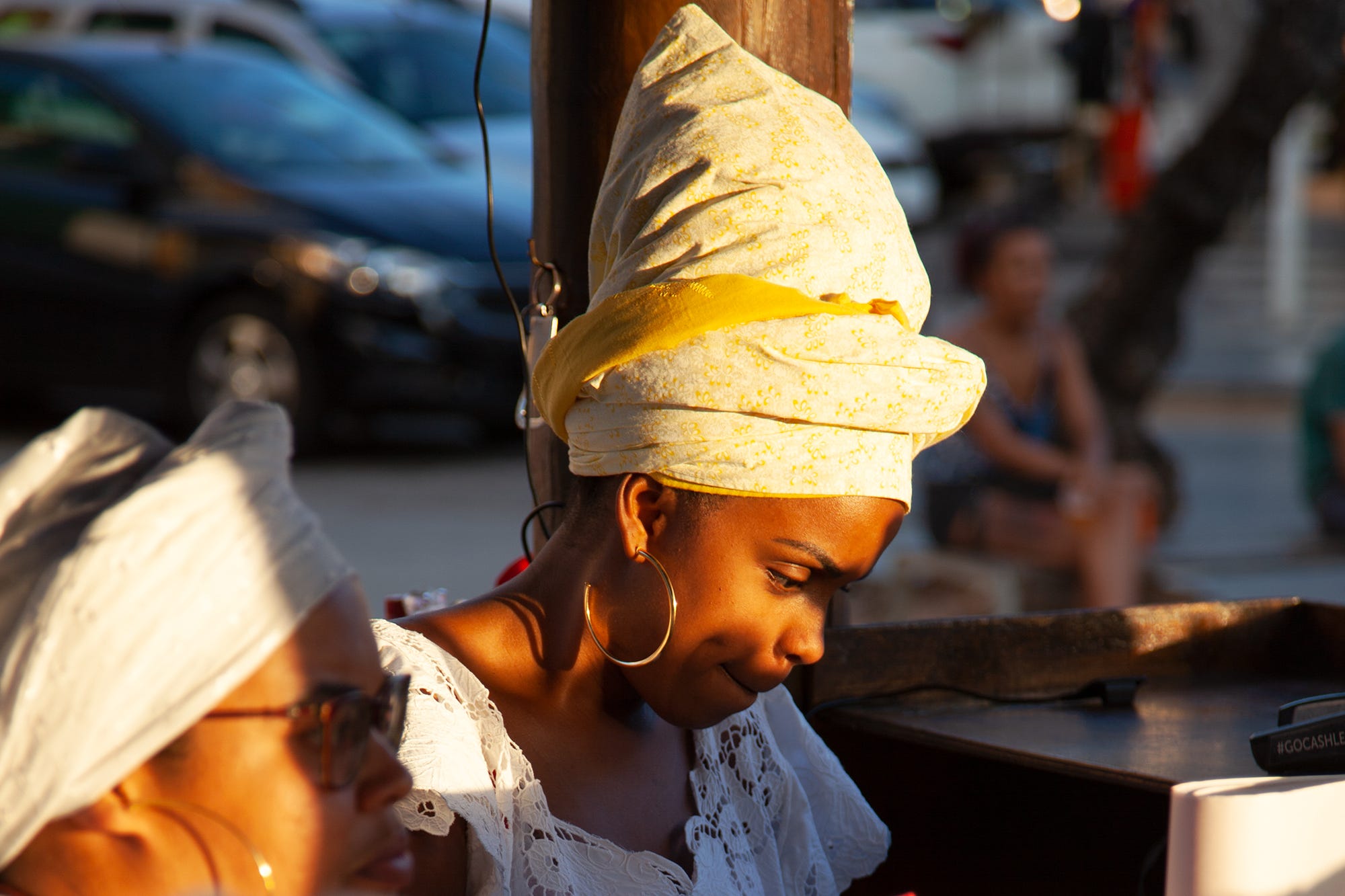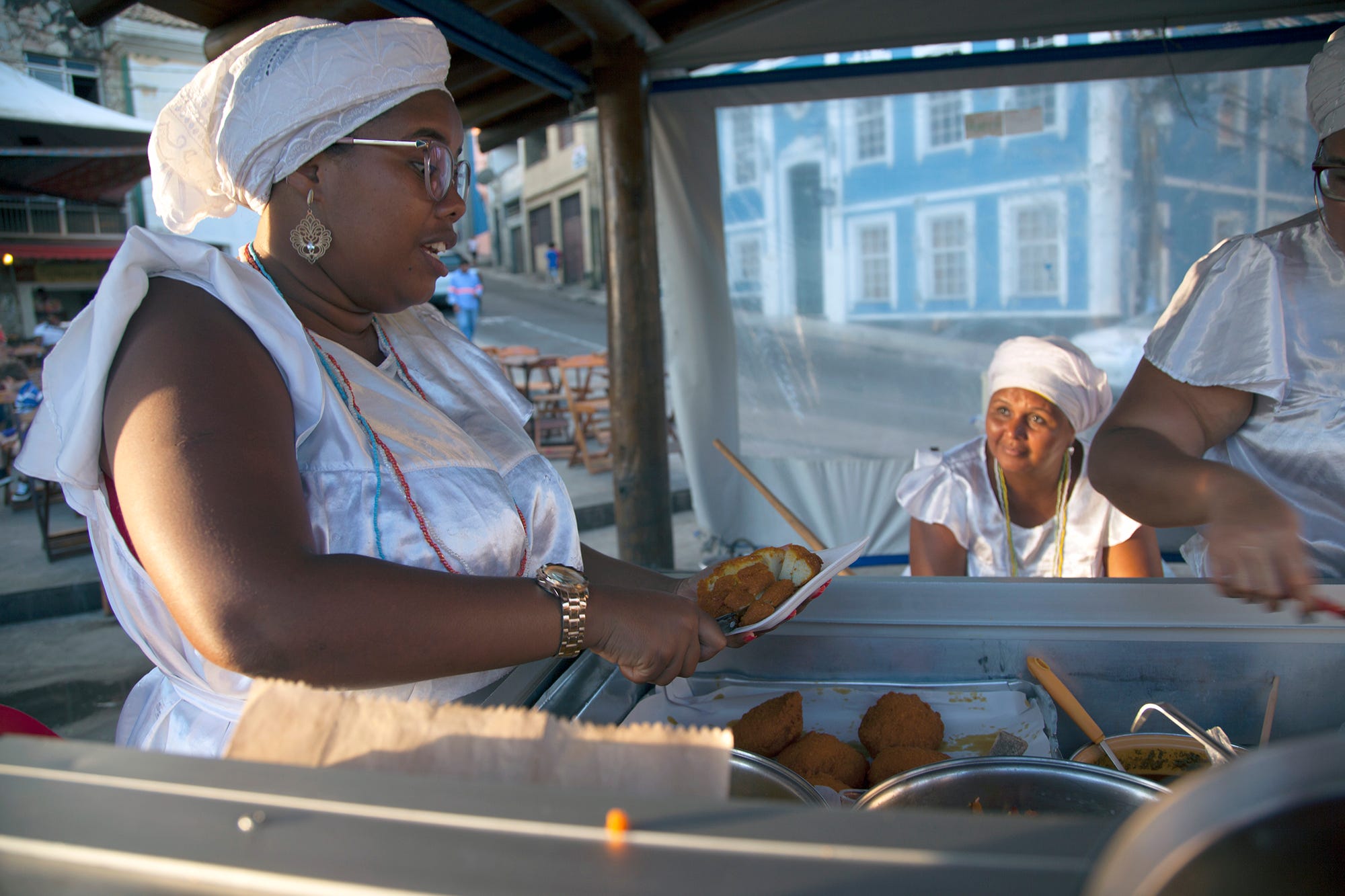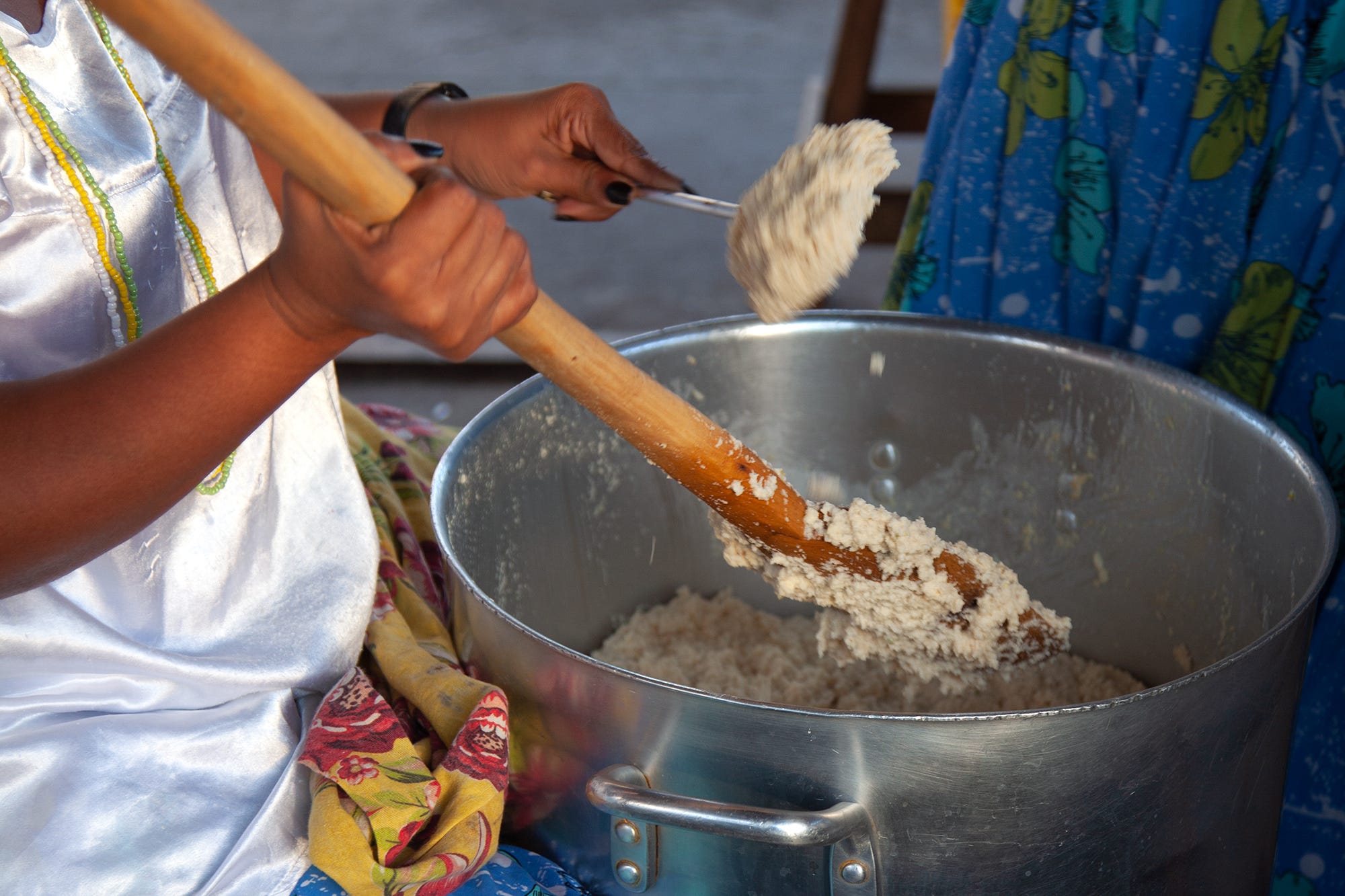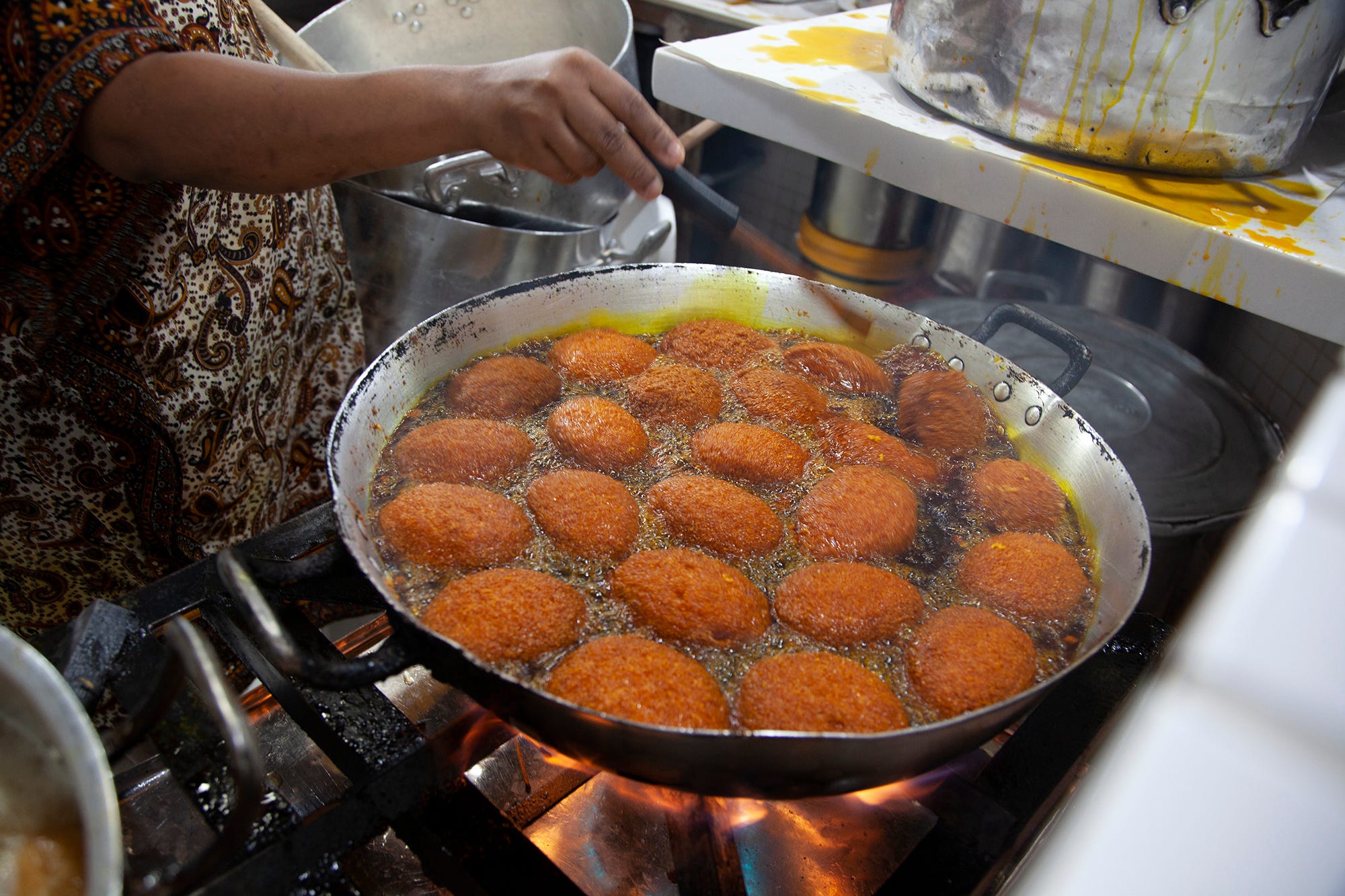Acarajé in Salvador de Bahia
A photo essay of the Baianas that sell these mashed bean fritters in the northern Brazilian city.
On the streets of Salvador de Bahia, Brazil, women known as Baianas do acarajé, wearing layered white dresses with lace details, beaded jewelry and headscarves, drop scoops of mashed black-eyed peas into a reddish orange palm oil known as dendê. They are making a fritter called acarajé that is integral part of Bahian culture.
Many of Salvador’s most famous acarajé vendors, who have been selling recipes that have changed little in decades, are found in Salvador’s Rio Vermelho neighborhood, such as Acarajé da Dinha and Acarajé da Cira. Most of the following photos are concentrated in this area.
From 1510 to 1866, Portuguese colonizers brought a staggering five million enslaved people to Brazil, over 40 percent of all the African people subjected to the trans-Atlantic voyage to the Americas. Prior to the abolition of slavery in Brazil in 1888, selling acarajé was done by escravas de ganho, or earning slave women, who would be allowed to keep some of the income to support their families and even buy their freedom. The sale of acarajé is believed to be one of the first female-dominated professions in all of Brazil.
The dress of the Baianas is an homage to the Afro-Brazilian religion of Candomblé, which originated here among slaves in the early 1800s, mixing West African, indigenous, and Roman Catholic beliefs. Condemned by the church, worship of Candomblé was kept secret by its followers, now estimated at around two million, until recent decades as it became more open.
The clothing is required for a license to sell acarajé as a part of Brazilian heritage. Additional rules have been enacted by Brazil’s institute of historical heritage to protect not just the recipe of acarajé, but the techniques and rituals surrounding it, such as the ways the beans are peeled and what the fritter can be stuffed with. If the Baianas don’t follow these rules, they can lose their license.
Candomblé focuses on the worship of different spirits called orixás, or santos (saints), and many of the rituals relating to it relate to food. For followers of Candomblé, every person is connected to a particular orixá, which influences their personality and spirit. Axé is a spiritual force or energy and offerings, such as food, maintain, enhance, and attract axé that give the orixás power to aid those they are connected to. So, these are offerings remain any of the most traditional dishes in Bahia and are eaten by everyone, not just those that practice Candomblé.
Slaves brought the recipe for acarajé to Brazil from West Africa, where it is prepared in a similar form, and has variety of names, like akará and kosai. The common version of acarajé sold by street vendors of Salvador are an offering to Iansã, the goddess of the winds and storms, though other ritual versions come in other sizes. Larger, round acarajé are for Xangô, the God of Fire, while the smallest ones are for child spirits called Erês. The fritter is closely related to acaçá, another ritual food made from either steamed and mashed white corn (for Oxala) or yellow corn (for Oxossi), which get placed on a pegi, or Candomblé altar.
Making acarajé is a labor-intensive process and many stalls are run by groups of Baianas to divide the work. To make it, black-eyed peas are mashed in a large wooden mortar and pestle, then fried in boiling dendê oil.
Dendê is the shockingly-brilliant orange palm oil that’s called azeite de dendê in Portuguese. It has a strong, almost peppery flavor and it gives most foods infused with it a reddish-orange color. While palm oil has become a taboo term for many, this is a good kind of palm oil that is not made on large plantations. It’s produced from the tiny, blushing nut of the dendezeiro palm (Elaeis guineensis), which is shaped like a Brazil nut can fit in your hand. The trees likely arrived from Africa sometime in the 1500s and the dendê oil became necessary to prepare the foods such as acarajé, vatapá, cauru, and moqueca.
Keep reading with a 7-day free trial
Subscribe to New Worlder to keep reading this post and get 7 days of free access to the full post archives.




